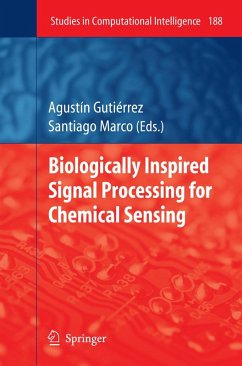This volume presents a collection of research advances in biologically inspired signal processing for chemical sensing. The olfactory system, and the gustatory system to a minor extent, has been taken in the last decades as a source of inspiration to develop artificial sensing systems. The performance of this biological system outperforms in many aspects that of their artificial counterpart. Thus, the goal of researchers in this field is to understand and capture those features that make the olfactory system especially suited for the processing of chemical information. The recognition of odors by the olfactory system entails a number of signal processing functions such as preprocessing, dimensionality reduction, contrast enhancement, and classification. Using mathematical models to mimic the architecture of the olfactory system, these processing functions can be applied to chemical sensor signals. This book provides some background on the olfactory system including a review on information processing in the insect olfactory system along with a proposed signal processing architecture based on the mammalian cortex. It also provides some bio-inspired approaches to process chemical sensor signals such as an olfactory mucosa to improve odor separation and a model of olfactory receptor neuron convergence to correlate sensor responses to an odor and his organoleptic properties.
Dieser Download kann aus rechtlichen Gründen nur mit Rechnungsadresse in A, B, BG, CY, CZ, D, DK, EW, E, FIN, F, GR, HR, H, IRL, I, LT, L, LR, M, NL, PL, P, R, S, SLO, SK ausgeliefert werden.









